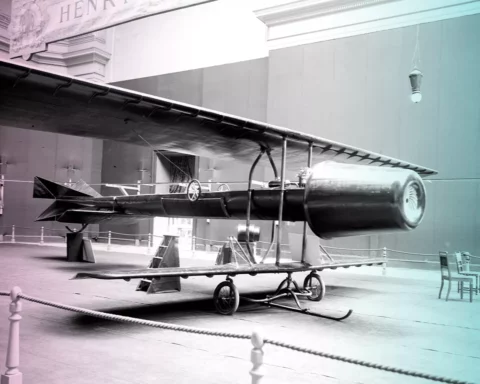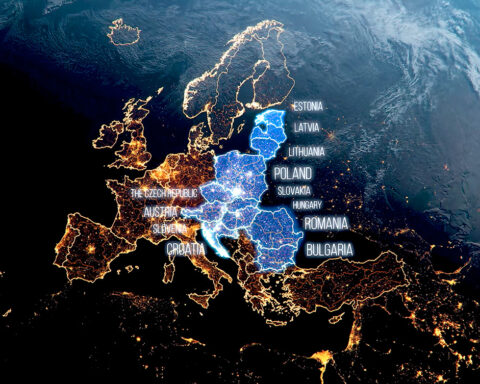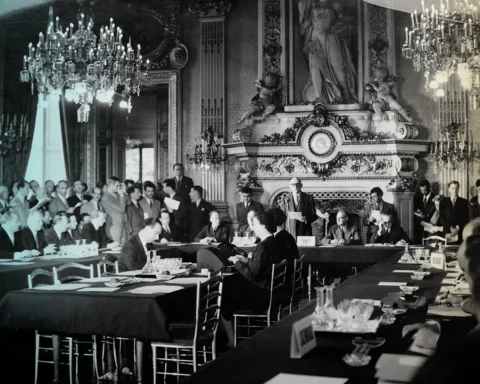As the old saying goes: if borders are not crossed by caravans, then they are crossed by the military. At a time when Europe was divided by the Iron Curtain, there was neither. This was precisely the peculiarity of the period. Although the armies of the hostile blocs did not attack each other, the risk of aggression was so high that trade activity between the two parts of the continent was also close to zero. This is where the term “Cold War” came from – because it was not a real war, but the tension between the two sides froze mutual relations virtually to the extent that an actual, full-scale conflict did.
If borders are not crossed by caravans, then they are crossed by the military
Until the fall of the Berlin Wall, there was not even a hint of caravan movement between the two blocs. But after the “velvet revolution,” this changed dramatically. The fall of communism and the wind of the change in Central Europe opened the borders for trade. Among others – for foreign investments (FDI). “Between 1993 and 2020, the world as a whole has been receiving FDI inflows of around 2.5% of global GDP, while foreign investment in Central, East, and Southeastern Europe has averaged 4.4% of the region’s GDP. Most of these inflows into CESEE – around 60% of the total – have been coming from the nearby EU15 countries,” wrote Branimir Jovanović and Doris Hanzl-Weiss, authors of the report “Economic and Social Impacts of FDI in Central, East and Southeast Europe” published in November 2022.
For many years foreign investments were a one-way street. All we had to deal with was the flow of capital from wealthy Western countries to Central Europe. But for the last few years, CEE countries have also been investing more and more abroad; this movement is increasingly two-way. With what results?
Tremendous opportunities for the region
The countries quoted in the above report as CESEE are 17 economies from the region: Czechia, Hungary, Poland, Slovakia, Slovenia, Estonia, Latvia, Lithuania, Bulgaria, Croatia, Romania, Albania, Bosnia and Herzegovina, Kosovo, Montenegro, North Macedonia, and Serbia. All of them were on the wrong side of the Iron Curtain. Currently, 11 of them are members of the European Union and 3 Seas Initiative. Others are looking for their own way of developing their economies, though at least a few also consider joining the EU and 3 SI.
They noticed that close cooperation and harmonization of activities result in a faster pace of economic development serving individual states. In turn, for countries seeking investment opportunities in Central Europe, they have become attractive opportunities to expand their own business fields. “Western European companies entered the attractive CESEE economies to ensure their presence in the new fast-growing markets, as well as to benefit from the lower production costs there,” wrote the report’s authors.
Foreign direct investment continues to flow into Central Europe. According to the World Bank, each 3 Seas Initiative country averaged FDI at of around 6.5% of GDP in 2021. The largest stream of money (data according to UNCTAD) flowed to Poland (USD 24.8 billion), Romania (USD 8.6 billion), Austria and Czechia (both USD 5.8 billion). On the second side of this axis are Slovakia (USD 59 million), Croatia (USD 559 million), and Estonia (USD 989 million). These figures confirm that a large part of CEE is seen as an attractive place to invest – if only because of its proximity to developed markets or skilled workforce.
The economic changes brought about by the pandemic and the war in Ukraine may further strengthen the region’s position and perception as an attractive investment destination. „The shortening and regionalization of supply chains play an important role in this. There are tremendous opportunities for Central and Eastern Europe if the framework conditions are right,” comments Philipp Haußmann, German Eastern Business Association board member.
Central-Europeans Tigers
Since the “velvet revolution,” Central Europe has primarily been an area that has attracted foreign investment. Moreover, it has been very active in seeking them out, seeing them as an excellent opportunity for development. This was for a simple reason. The region, after almost half a century of operating according to the rules of the communist economy, was severely underdeveloped and lacked the capital necessary to fuel economic development to make up for the lost decades.
But this picture changed in the last few years. Nowadays, CEE countries are no longer just an investment capital-hungry region of Europe. Increasingly, they are also becoming exporters of such capital. Companies from this part of the continent are increasingly looking for investment opportunities outside their own countries. World Bank data confirm this. In 2021, on average, each of the 3 SI countries invested 4.6% of their GDP abroad. Still less than the level of inflows of FDI to the region – but when this number is compared to the level of investment in previous years, one can see a big jump ahead.
In 2011, countries of Central Europe invested abroad 1.3% of GDP on average – and this figure was heavily inflated by Austria, whose FDI outflow was 8.8% of GDP at the time. This comparison best shows how far Central European countries have come in recent times. The leap they have made is comparable to that made by the ‘Asian tigers’ (South Korea, Taiwan, Singapore, Hong Kong) between 1960 and 1995.
Central European entrepreneurs on the rise
There are already examples of this expansion abroad of companies from CEE states. For instance, Hungarian firm Videoton (one of the three largest electronics manufacturing service providers in the European Union) has invested 2.4 million euros in the electronic equipment plant in Stara Zagora in Bulgaria. Hungarian petroleum company MOL keeps investing in Romania, Croatia, and Slovenia. Polish companies are also investing more and more abroad. In the Czech Republic alone, Polish companies have so far invested EUR 2.6 billion. Polish or Czech entrepreneurs also regularly seek investment opportunities in Germany or France.
Of course, all the time, these are not deals that will be among the top ten largest acquisitions in the world – the wealth of Central European investors’ portfolios is still too small for that. But even so, we can see an obvious change in recent years. During the Cold War, buyers’ caravans hardly traveled between Western and Central Europe.
After the fall of the Iron Curtain, this changed, but the traffic was only in one direction: from west to east. However, for some time now, it has also started to come alive in the other direction. And it looks like a sustainable process, as neither the pandemic nor the war in Ukraine has disrupted it too much. This is what closing the gap between West and Central Europe looks like.







